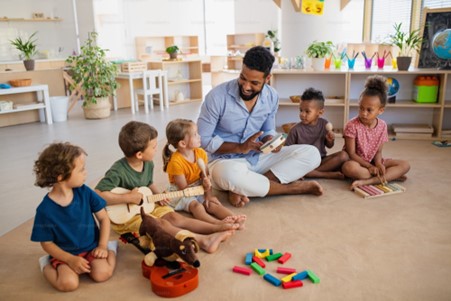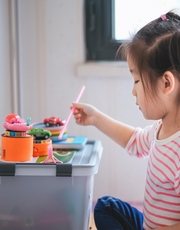Aortic Stenosis in Newborns: How to Treat in the Real World
In the practice of neonatal medicine, aortic stenosis is one of the critical congenital heart defects; it is a thorny problem for medical science. The pathological condition is characterized by a narrowing aortic valve, which, in essence, hinders the continuous flow of blood from the heart chamber.
Quick and effective treatment would be needed to ensure the survival and health of newborns. By 2024, remarkable progress had been made in diagnosis and management, which led to significantly improved outcomes for these young patients to have healthier lives.
The treatment of aortic stenosis in newborns requires a coordinated approach that includes pediatric cardiologists, cardiac surgeons, and a multidisciplinary medical team. The development of treatment plans must be individualized. These plans will need to take into account the severity of the stenosis, the presence of other medical conditions, and the overall health of the infant.
With ongoing advancements in medical technology and surgical techniques, the outlook for newborns with aortic stenosis continues to improve. This emphasizes the importance of early detection and the effectiveness of current aortic stenosis treatment.
Understanding Aortic Stenosis in Newborns
Aortic stenosis in newborns presents in two forms: critical and non-critical. Critical aortic stenosis is a life-threatening condition needing very urgent intervention; on the other hand, non-critical stenosis may be managed by careful monitoring and later intervention. Aortic stenosis is present in about 3 live-birth cases per 10,000. It shows a slight predilection for males over females.
Understanding the Pathophysiology
The pathophysiology of aortic stenosis involves the obstruction of blood flow out of the left ventricle due to a narrowing at the level of the aortic valve. This obstruction forces the heart to work harder, which can lead to hypertrophy of the left ventricle and eventually heart failure if left untreated. In critical cases, the aortic valve area is severely reduced at birth, which can quickly progress to critical heart conditions. Non-critical stenosis, while less severe, still requires monitoring as it can progress and may eventually necessitate intervention.
Diagnostic Techniques
An early and accurate diagnosis will play a very critical role in managing aortic stenosis. Echocardiography will remain the gold standard diagnostic tool that provides very precise images of the structure and functional details of the heart, even in the year 2024.
Improvements in fetal echocardiography now detect coarctation and even aortic stenosis in utero, opening a window for doctors to plan interventions early in life.
Current Treatment Approaches
How do these treatment strategies differ in cases of aortic stenosis in a newborn? They include mainly:
- Balloon Aortic Valvuloplasty: is the first-line treatment of critically narrowed aortic valves in neonates through balloon dilation. Recent statistics reveal a 75% success rate, with significant improvement in valve function and blood flow.
- Surgical Valvotomy: In conditions where balloon valvuloplasty is not feasible or shows unsuccessful results, the one that comes into play is surgical intervention. In surgical valvotomy, a direct incision over the valve is performed to relieve obstruction. With advancements in surgical methods and postoperative care, the survival rate from these procedures exceeds 90%.
- Aortic Valve Replacement: When the leaflets of the aortic valve are badly damaged, valve replacement is the only option. Technological advances today have allowed for the development of more durable and size-appropriate valves for individuals.
Post-Treatment Care
Ongoing care is imperative to monitor for further complications that ascertain valve regurgitation, heart failure, and so forth. Regular follow-up care with a pediatric cardiologist should be maintained. The home monitoring technologies developed by 2024 continue to make great strides in the ability to follow the conditions of patients in their environment for timely adjustments in treatment.
Future Directions in the Treatment of Aortic Stenosis
Research at that time will continue to focus on ways to improve outcomes for newborns with aortic stenosis. Some of the innovations in the pipeline include gene therapy and regenerative medicine. These new focal points would be able to repair damaged heart tissues from the inside or possibly correct underlying genetic causes, without the need for invasive procedures.
Gene Therapy Advances
Gene therapy holds great promise for treating congenital heart defects like aortic stenosis. Researchers are exploring the potential to modify or replace genes responsible for the development of the aortic valve. This approach could theoretically correct the developmental issues that lead to stenosis at the genetic level.
As of 2024, clinical trials are underway to test the safety and efficacy of these gene therapies. The aim is to provide a permanent solution that could prevent the progression of the disease from its earliest stages. The future of gene therapy looks promising as it aims to not only treat but potentially cure aortic stenosis by addressing its root cause.
Enhancements in Regenerative Medicine
Regenerative medicine is another area receiving significant attention. This field utilizes stem cells and tissue engineering to regenerate healthy heart tissue and potentially, whole heart valves. Current research focuses on developing biological heart valves that can grow and adapt with the child, eliminating the need for multiple surgeries as the child grows.
These bioengineered valves are designed to integrate with the patient’s tissues, reducing the risk of rejection and other complications associated with mechanical valves. Ongoing advancements in this field may lead to treatments that restore heart function more naturally and durably.
These emerging therapies are complemented by better diagnostic tools and more precise surgical techniques that together improve the comprehensive care landscape for newborns facing aortic stenosis. As the field advances, the integration of these innovative treatments with traditional approaches could revolutionize the prognosis for infants born with this challenging condition, offering hope for a healthier start in life.
Challenges and Considerations
Despite the advanced therapy, the management of aortic stenosis in a neonate is very challenging. Issues mainly include the timing of intervention, long-term effects of early cardiac surgery, psychological stress, and financial stress of the families.
Conclusion
Over the last ten years, the management of aortic stenosis in the newborn has changed dramatically. There are now better tools for diagnosis and more effective interventions, which have all played a part in improving the prognosis of afflicted neonates.
For many years, these disorders were considered untreatable, but nowadays, with new technology and modern research techniques, emerging therapies are being developed. They will prove effective and useful in offering a better quality of life to those who.
To make these a reality, the interdisciplinary collaborations of families, researchers, and clinicians need to continue so that every child with aortic stenosis has access to the very best potential outcome.



 Katie Brenneman is a passionate writer specializing in education, mental health, family lifestyle and online safety. When she isn’t writing, you can find her with her nose buried in a book or hiking with her dog, Charlie. You can follow her on
Katie Brenneman is a passionate writer specializing in education, mental health, family lifestyle and online safety. When she isn’t writing, you can find her with her nose buried in a book or hiking with her dog, Charlie. You can follow her on 




